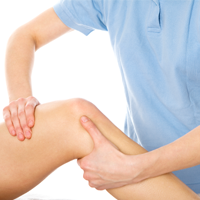The Struggle to Keep It In Living With Urinary Incontinence

Urinary incontinence is the inability to keep urine in the bladder. This is due to loss of voluntary control to the muscles that are responsible for keeping urine in the bladder, and for passing urine.
Even if urinary incontinence affects millions of people, it isn’t a normal part of aging or, in women, an inevitable consequence of childbirth or changes after menopause. It’s a medical condition with many possible causes, some relatively simple and self-limited and others more complex.
There are five kinds of urinary incontinence:
1. Stress incontinence. This is due to weakening of pelvic floor muscles. “Accidents” may happen when you cough, sneeze, laugh, exercise or any other movements that add intra-abdominal pressure or pressure to the bladder, causing small amounts of urine to escape.
2. Urge incontinence or Hypertonic. This is when you feel an urge to urinate for no apparent reason. The most common cause of this is involuntary and inappropriate detrusor muscle contraction. The detrusor muscle is the muscle responsible for bladder contraction when passing urine.
Urge incontinence may be caused by local or surrounding infection, inflammation, or irritation of the detrusor muscle; or a defective CNS inhibitory response. Some doctors may call it as a spastic, or overactive bladder. People with urge incontinence usually feel the need to urinate even by simply hearing the sound of gushing water, touching something watery, or drinking a small amount of water.
3. Functional incontinence. This occurs when the person does not recognize the urge to go to the toilet to urinate or fails to get to the toilet in time.
4. Overflow incontinence or Hypotonic. This occurs when the person’s bladder is always full that it leaks urine. Weak bladder muscles or a blocked urethra may result in incomplete emptying of the bladder, causing this kind of incontinence.
5. Transient incontinence. This is temporary urinary incontinence brought about my medications and certain medical conditions that may cause urinary tract obstruction.
There are many ways to treat incontinence, here are a few:
Exercise. This requires exercising the muscles of the pelvis. Kegel exercises may help strengthen the muscles responsible for controlling urination. Strengthening or retaining pelvic floor muscle functionality may help reduce stress incontinence.
Vaginal cone therapy. This is done with the use of a set of five vaginal cones of different weights. The patient inserts the small plastic cone inside her vagina where it is help by a mild reflex action of the pelvic flood muscles. Vaginal cone therapy is done to strengthen the appropriate muscles of the pelvic floor.
Bladder training. This is done by taking trips to the bathroom at certain times before he or she involuntarily leaks. This helps condition the body to set a schedule for storing and emptying urine.
Medications. Some drugs inhibit contraction of an overactive bladder. Some medications relax the bladder to completely empty it during urination. Some medications tighten the bladder muscles, preventing leackage.
Surgery. This is suggested only in cases where other treatments have already been tried but failed to work.
There are a lot more treatments available for curing urinary incontinence. It is best to consult your doctor thoroughly as to what is the best possible means you can use to rid yourself of this problem.
Incontinence often brings with it a feeling of shame, and it may sometimes make a person to isolate himself from society in fear of being made fun of. Urinary incontinence is no laughing matter. However, you must not be afraid to seek medical help about this concern. The sooner you get over this hurdle, the sooner you can get back to a life without worrying if you’re going to make it to the toilet when you need to urinate.



